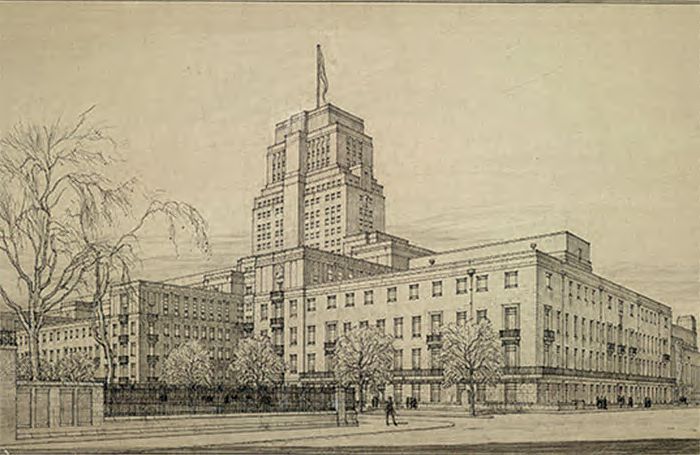RIBA Collections: Equity, diversity, and inclusion content
RIBA believes that an inclusive and diverse profession that is representative of the society it serves is pivotal to meeting the challenges of the future. As we work to promote the diversification of the profession, explore our EDI resources within our RIBA collections below.
Accessible architecture? How today’s inclusive spaces can help solve 200 years of accessible design challenges
Ed Warner, Founder and CEO of the accessible design business Motionspot and Government Access Ambassador for Accessible Products and Spaces, looks at how modern day inclusive principles can help solve the decades of accessible design challenges evidenced in the collections.
A hundred years of Surrealism - le cadavre exquis activity toolkit for practices
For LGBT+ History Month 2024, we marked the 100th anniversary of Surrealism – a powerful movement in the arts. As part of this anniversary, we've created an interactive toolkit influenced by architecture that allows participants, quite literally, to play with, dissemble and reimagine items from the RIBA Collections. Read more about the Surrealist movement and its connection to the LGBTQ+ community.
RIBA Collections research guides
Our growing collection of research guides highlights the range of people, practices and projects represented in the RIBA Collections. Browse the list to find out what material we hold and how you can access it, either in person or online.
Unpacking imperialism
Read about how the history of RIBA is closely entwined with that of the British Empire, which expanded and consolidated its colonial grip around the world during the institute’s formative years in the 19th and early 20th centuries. We acknowledge this to promote EDI.
"The Partners": Seely and Paget
The firm Seely and Paget played an important role in British architecture from the 1920s to the 1960s, from their controversial transformation of Eltham Palace for Stephen and Virginia Courtauld in 1936, to their work as successive surveyors to the fabric of St Paul’s Cathedral.
Revisiting Florence's Duomo
We explore how the dome of Florence Cathedral reveals the presence of queer stories at the symbolic heart of the Western architectural tradition.
Revisiting the Collections: The queer aesthetics of Strawberry Hill House
Strawberry Hill House in Twickenham, southwest London, can be read as a "queer architectural rebellion”, raising important questions about the connection between architectural innovation and queer identity.
Revisiting the RIBA Collections: Plas Newydd and the Ladies of Llangollen
Chair of RIBA’s internal LGBTQ+ Community group, Emily Jeffers explores how a cottage in rural Wales has led contemporary historians to re-evaluate how we project our own understanding of female queer relationships onto historic figures, particularly women, who have expressed intimacy in different ways.
Who was the first Black RIBA Member?
This is a question we’d like to be able to answer more definitively. In this article, our RIBA Collections team share their approach to answering it, signpost to RIBA Library and Collections sources that inform their research, and explore why some questions remain unanswered.
"This Dilemma": Collecting and constraints at the RIBA
Chater Paul Jordan explores the shaping of the RIBA Collections, to consider what absences and silences they might be defined by.
A dwelling of her own: Housing for single, working women in the 20th century
Working women weren’t a new phenomenon; many British women had been factory workers, teachers, and domestic servants throughout the 19th century, and many more worked within their own homes. Read about housing for single, working women in the 20th century.
Pioneers then and now
Jane Drew, Pat Tindale, Elaine Denby, and Rosemary Stjernstedt reflect upon their careers as women architects.
Revisiting the Collections: The Forgotten Women
Sarah Ackland of Part W calls for collections like RIBA’s to do more to proactively address the under-representation of women architects from architectural archives.







